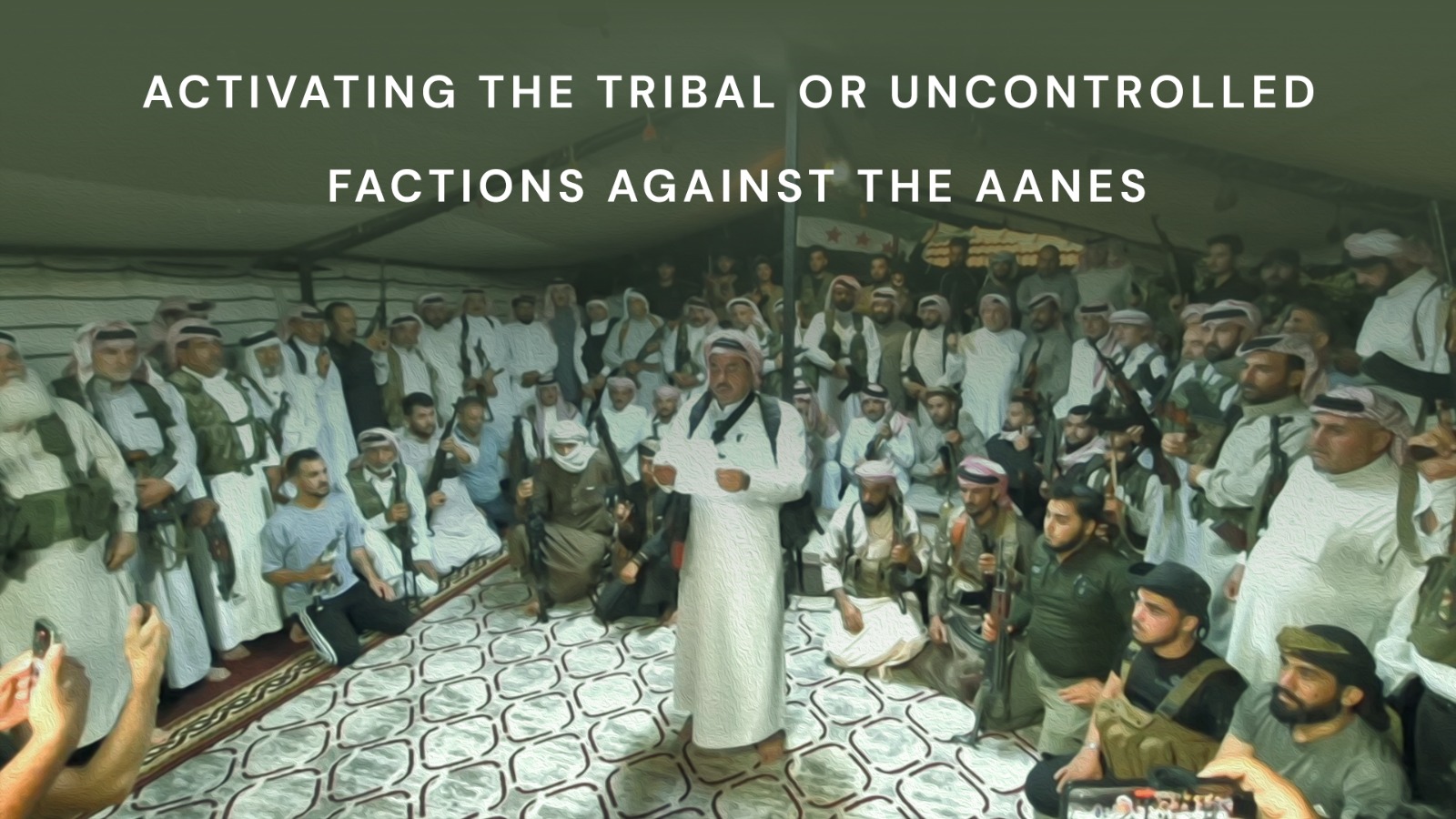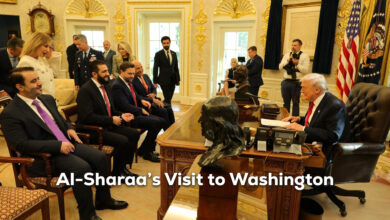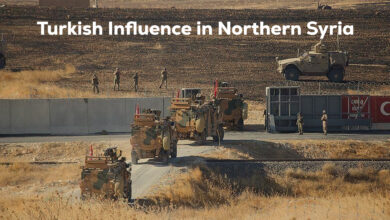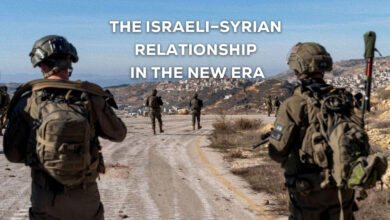Activating the Tribal or Uncontrolled Factions Against the AANES

The Autonomous Administration of North and East Syria (AANES), born out of the Syrian crisis, represents a distinct model from other Syrian regions that emerged from the conflict—politically, militarily, economically, socially, and in terms of security. It adopted a democratic project for all Syrians and has sacrificed tens of thousands of martyrs and wounded to reach this stage. This model could serve as the foundation for a broader project encompassing all Syrian territory, should Damascus choose to engage with the Administration.
However, from the very first day of its establishment, and according to the claims of Turkey, Iran, and both the old and new Syrian regimes, the Autonomous Administration’s democratic project has posed a threat to their national security and to the structure of governance in Syria. As a result, these actors have sought to undermine it through various military, security, social, and economic means. Despite this, the Administration has remained steadfast—whether through the efforts of its own people and the solidarity of its communities, or through international interventions that have prevented the Turkish occupying state from carrying out a full-scale, brutal invasion of the region, following its occupations of Afrin in 2018 and Tel Abyad and Ras al-Ain in 2019.
Following the collapse of the Baathist regime in Syria in late 2024, a new government was formed, built upon the foundations of the Salvation Government in Idlib. It adopted a single-color, centralized system—contrary to the approach of the original Salvation Government, which was run by Hay’at Tahrir al-Sham and operated independently of the opposition coalition and its interim government, refusing to recognize them. Today, however, it calls for centralization and works by all means to bring all regions under its Islamist authority.
Policy of the New Regime in Syria
Since its establishment, the new regime in Syria has worked to build a new Syrian army. However, this newly formed army is closer in nature to a force of mercenaries, comprising terrorist factions formally affiliated with the Ministry of Defense but in reality operating under Turkey’s direct command and receiving orders exclusively from Ankara. The current Ministry of Defense itself is not far from the Turkish agenda, with most ministers and government officials being former military leaders from Hay’at Tahrir al-Sham factions and other Turkey-backed mercenary groups. This explains the massacres committed against various Syrian communities, including the Alawites, the Druze community, and earlier, the Kurds.
Rather than adopting a national policy aimed at unifying Syria and alleviating the negative consequences of the Syrian crisis on its people, the new regime has pursued a course that undermines the unity of Syrian territory and fractures Syrian society from within.
The recent events in Suwayda, including massacres targeting the Druze community, have exposed the mindset driving this army and the new regime. These actions have drawn international pressure on the regime due to its aggressive policies toward Syrian communities. Some countries have even withdrawn recognition of the regime, returning it to the list of terrorist entities. In an effort to deflect blame, the regime has resorted to using the term “uncontrolled” or “unruly” factions—a tactic that may have the backing of certain regional powers—and has begun implementing this policy on a wide scale.
The real danger at this stage lies in the so-called “tribal forces” or “tribal mobilization,” not because of their inherent strength, as they do not represent all Arab tribes but only certain segments, but because they risk igniting ethnic strife—both between Kurds and Arabs, and among Arab tribes themselves.
Arab Tribes in Areas Under the AANES
Since its inception, the AANES has been the product of peaceful coexistence between the Kurdish and Arab components, alongside other communities in the region. It is governed inclusively, without exclusion, with Kurds and Arabs constituting its two principal components—yet without any discrimination or preferential treatment toward any group, in line with the Democratic Nation project.
While most Arab tribes do not explicitly adopt the Democratic Nation project, some—particularly west of the Euphrates—reject the Administration altogether. This rejection stems either from the Baath Party’s decades-long policy of fostering hostility and resentment toward Kurds, and even among Arab tribes themselves, to consolidate its control, or from the close ties these tribes historically maintained with the former Baathist regime and now with the new regime. In other cases, the rejection is driven by external agendas.
Nevertheless, the majority of Arab tribes within the Autonomous Administration’s territories believe in the democratic project and in self-administration. To undermine this project and dismantle the Syrian Democratic Forces (SDF), exploiting the “Arab tribes card” becomes essential—given that Arab tribes make up a significant proportion of the SDF’s ranks.
Using the Arab Tribes to Undermine the AANES
There have been repeated attempts by the former Baath regime, as well as by Turkey and Iran, to activate and exploit the “Arab tribes” card against the Autonomous Administration. These efforts have included convening tribal meetings—whether in areas under the control of the former regime or inside Turkish territory—aimed at undermining the AANES and the SDF. However, all such attempts have so far failed. These efforts have nevertheless continued even after the fall of the former regime, with each actor—the new regime, certain Arab states, the Turkish Turanian state, and even Iran—seeking to leverage this card to advance its own agenda in Syria.
The events in Suwayda, and the emergence of terms such as “Tribal Forces” or “Arab Mobilization” following the failure of the Public Security Forces to assert control over the province, can be seen as the first step toward activating this card against the AANES. This could serve either as a means of gauging the general response of Arab tribes across Syria or as a military maneuver to test the viability of this card for use at a later stage.
The developments in Suwayda cannot be dismissed as mere coincidence, nor as a simple outcome of the clashes between the Public Security Forces, in coordination with the new Syrian army, and the Suwayda Military Council, nor solely as a result of the new regime’s failure to take control of the province. The revival of tensions between Bedouins and Druze was clearly intended to deflect blame from the new regime over its violations against the Druze community in Suwayda, by portraying Bedouin militants as unruly groups beyond the regime’s authority. However, eyewitness accounts, prisoner testimonies, and field reports point to the opposite.
Thus, the events in Suwayda—and the role played by certain Arab tribes and Bedouin militants in areas under regime control—serve as a clear indicator of preparations for an operation targeting the east of the Euphrates, namely the territories of the AANES.
Although there is currently a ceasefire in place on the Tishrin Dam front north of Raqqa, which prevents that front from being activated, and a separate ceasefire agreement between the SDF and Damascus, the new regime and Turkey are capable of violating these arrangements. They could do so by mobilizing so-called “uncontrolled factions” to shell and attack military and civilian positions in AANES areas—especially since the new regime’s media has been engaged in systematic incitement of Arab tribes against the Administration, and against the Kurdish component in particular.
Activating the Tribal or Uncontrolled Factions’ Card West of the Euphrates
Given the existence of a U.S.-brokered ceasefire agreement between the SDF on one side and Turkey and its proxies on the other, as well as an agreement with Damascus, and because these arrangements do not serve the interests of either Turkey or Damascus, the term “uncontrolled factions” has been introduced under labels such as “Tribal Forces” or “Bedouin Militants.” Damascus claims these groups are beyond its authority, but their real purpose is to stir unrest along the entire Euphrates front.
Unable—or unwilling—to recognize and accept the current reality of the AANES and the SDF, both the new regime and states opposing the Administration’s democratic project are working to destabilize its areas. They do this by targeting SDF military positions and striking civilian areas in Manbij’s countryside or in western Deir ez-Zor, with the goal of activating all Euphrates fronts through these so-called uncontrolled factions. The aim is to terminate the ceasefire, create confusion, and impose a new political and military reality that serves their interests.
While the peaceful coexistence between the AANES’ communities—especially between Kurds and Arabs—has proven extremely resilient since the Administration’s founding, this does not mean hostile actors are incapable of committing violations against the Arab component, or even massacres, to create chaos and push Arab communities to turn against the SDF. Such actions could also be used to justify the mobilization of these uncontrolled factions operating under the banner of Arab tribes west of the Euphrates.
However, this alone would not be enough. The factions labeled “uncontrolled” by the new regime—which include the Public Security Forces, the new Syrian army, and Turkish-backed mercenaries—are not strong enough to confront the SDF on their own. For the military balance to tilt in their favor, Turkish intervention or support would be required. The new regime’s request for military aid to the Syrian army in the form of armored vehicles, weapons, and drones fits squarely within this strategy.
Consequences of Activating the Arab Tribes or Uncontrolled Factions’ Card Against the SDF
Arab tribes in Syria can broadly be divided into two categories. The first—and by far the majority—are aligned with the AANES and the SDF and are located within the Administration’s territories. The second are linked to the new regime and to various external agendas—Arab, Turkish, and Iranian—shaped by more than a decade of the Syrian crisis.
The matter is not merely about who controls a given area, but about the policies the controlling side adopts. There is a stark contrast between the governance approach of the Autonomous Administration and that of the new regime. Based on the new regime’s conduct in Syria’s coastal and southern regions, the likely outcome for any area it may take over—should military operations erupt between the SDF and the new regime, along with its so-called uncontrolled factions—is readily apparent. Such developments could also exacerbate tensions among Arab tribes themselves, potentially leading to killings, looting, and destruction, and ultimately triggering inter-tribal warfare that would seriously fracture Syria’s social fabric—particularly the Arab component, to the point of complete disintegration.
The AANES’ Response to the Intentions of the New Regime and Turkey (Conference on the Unity of Components)
In the wake of the massacres in the coastal region and in Suwayda, the Autonomous Administration and the SDF are acutely aware of the threats being orchestrated against them and against the communities of the region, as well as of the potential social fragmentation this could cause—both locally and across Syria. To reinforce national cohesion and block these malicious schemes, particularly those targeting the Kurdish and Arab components, the Conference on the Unity of Position of the Components of North and East Syria was held on August 8, 2025, in the Jazira Canton in the city of Hasakah, under the slogan “Together for Diversity that Strengthens Our Unity, and Partnership that Builds Our Future.”
In its closing statement, the conference affirmed that the ethnic, religious, and cultural diversity of North and East Syria is a source of strength and enrichment, stressing the need to entrench this diversity within political and administrative structures, and to ensure full representation of all components as a means to reinforce social unity. The statement described the Autonomous Administration model as a participatory experience capable of growth and improvement, and as a living example of democratic community governance. It further declared that the atrocities committed against the people of the coastal region, Suwayda, and the Christian community constitute crimes against humanity that require impartial investigation, with transparency and integrity, to identify the perpetrators—whoever they may be—as these crimes amount to an attack on the entirety of the national fabric.
The conference also called for a comprehensive Syrian national gathering that would bring together all national and democratic forces, with the aim of defining a genuine, inclusive national identity for all Syrians. It concluded by emphasizing that the document emerging from the Conference of the Components of North and East Syria reflects a free will, a shared collective awareness, and a firm commitment to building a free, united, democratic, pluralistic, and decentralized Syria—governed by the rule of law, preserving human dignity, and ensuring equality and freedom for all.
Despite the importance of this conference—which united all Syrian components under one roof (Kurds, Arabs, Syriacs, Druze, Alawites, Sunnis, and others) for the sake of preserving Syrian territorial unity and social cohesion, and which envisioned a democratic, pluralistic, and decentralized Syria—the closing statement was rejected by the new regime. The regime remains committed to a single-identity, centralized system, influenced by Turkish pressure and its own ideological orientation. Instead of supporting the conference, the regime denounced it, withdrew from the Paris negotiations, and stated that “the form of the state cannot be determined through factional understandings, but through a permanent constitution ratified by popular referendum, ensuring the equal participation of all citizens. Any citizen has the right to express their vision for the state, but this must occur through public dialogue and the ballot box, not through threats or armed force.”
This stance, however, contradicts the regime’s current policies, whether in holding its so-called “national” conference in February 2025 without any representation of Syria’s diverse components, issuing a unilaterally-framed constitutional declaration, committing massacres against the Alawite and Druze communities, or through its proposed mechanism for upcoming parliamentary elections.
In short, the new regime’s post-Baathist policy is not a national strategy aimed at rebuilding Syria, but rather one designed to dismantle Syria’s social fabric—even within individual communities. The massacres committed against the Alawite and Druze communities were not motivated by territorial conquest—since residents of those areas have declared their commitment to Syria’s unity and to Damascus—but by hatred, sectarian animosity, and the radical ideology embraced by these factions and their government. Such a path risks dragging the country into sectarian or civil war, rather than fostering unity and restoring the mosaic of coexistence that once characterized Syria.
The new regime cannot be absolved of responsibility for the widespread violations occurring across Syria against both individuals and communities. It cannot credibly claim that these abuses are solely the work of “uncontrolled factions.” The regime bears the greater share of responsibility: if it is unable to rein in these factions, this is a clear sign of its failure to govern—necessitating the empowerment of national and military forces such as the SDF and the Suwayda Military Council to play their role in rebuilding Syria and restoring stability. Alternatively, if the regime wields direct influence over these events and acts on external orders, then it is actively—whether directly or indirectly—working to dismantle Syria’s social fabric and divide the country into mutually hostile enclaves.
The postponement of the Paris meeting between Mazloum Abdi and Ahmad al-Sharaa by the new regime, and its withdrawal from the negotiations, are direct results of Turkish pressure on Damascus. Ankara does not want a final agreement between the two sides unless it serves its own centralized governance agenda and eliminates any form of autonomous administration in North and East Syria—or anywhere in Syria. From this perspective, the failure or indefinite postponement of the meeting appears linked to preparations for the so-called “Tribal Forces” or “Bedouin Militants” (uncontrolled factions), which are being readied for deployment against the territories of the Autonomous Administration and the SDF. In this light, the new regime’s exploitation of the Components Unity Conference is nothing more than a pretext for engaging in a military operation.




